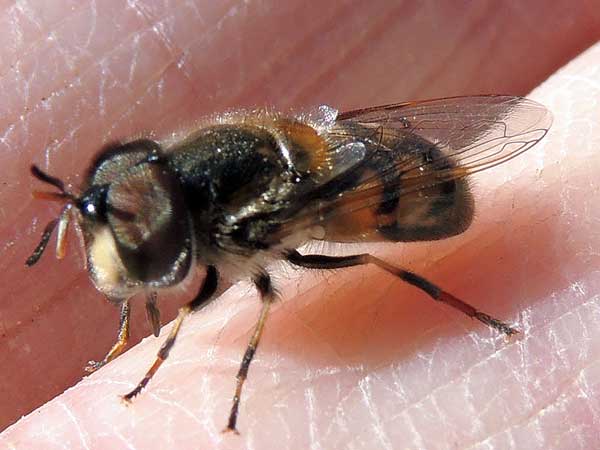Rat-tail Maggot Fly
Copestylum marginatum (?)

Cave Creek Regional Park, Maricopa Co., Arizona, 04 Dec. 2016.
Syrphidae -- Hover Fly Family
House flies that show up at barbecues or kitchens are wary and ever so fast in flight. The hover fly, in contrast, is docile and slow to be disturbed. Here it is calmly sitting upon my friend's hand. It very much resembles a bee, yet is completely harmless. Its evolutionary ploy to avoid being predated by a bird or lizard is this mimicry of a stinging insect. The larval stage of this fly probably lived in the decomposing remains of a succulent plant like a dead cactus.
The inside of a rotting cactus frequently becomes liquefied and insects which live in this soup are adapted to aquatic life. Rat-tailed maggots, for example, have an elongated abdomen (tail) supporting air-intake spiracles at the tip. When the worm-like maggot-larva needs oxygen it raises its spiracles up out of the soup and into the air.